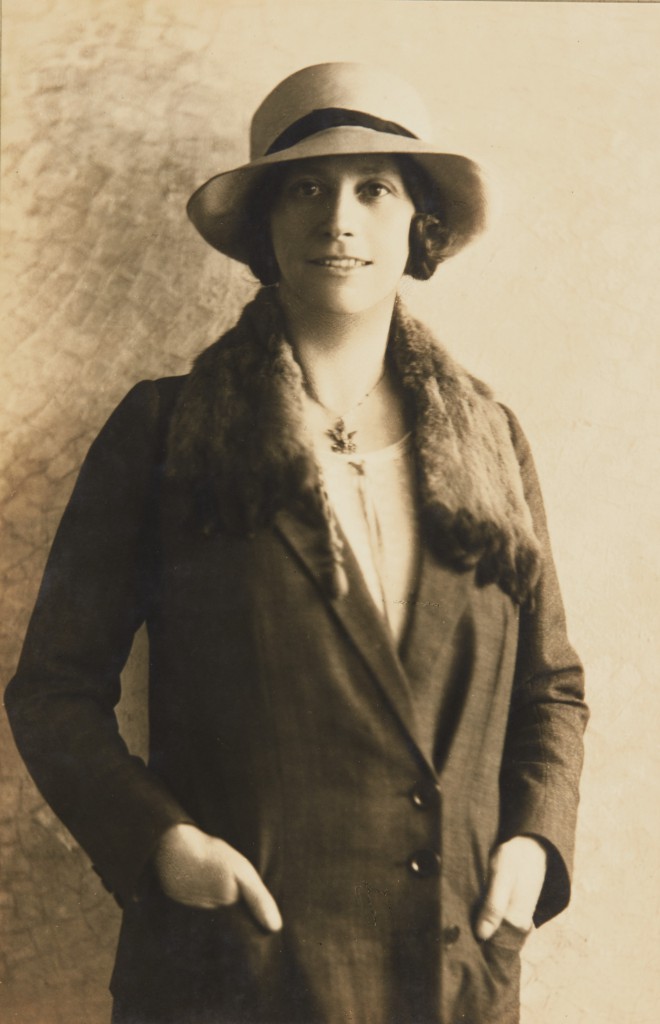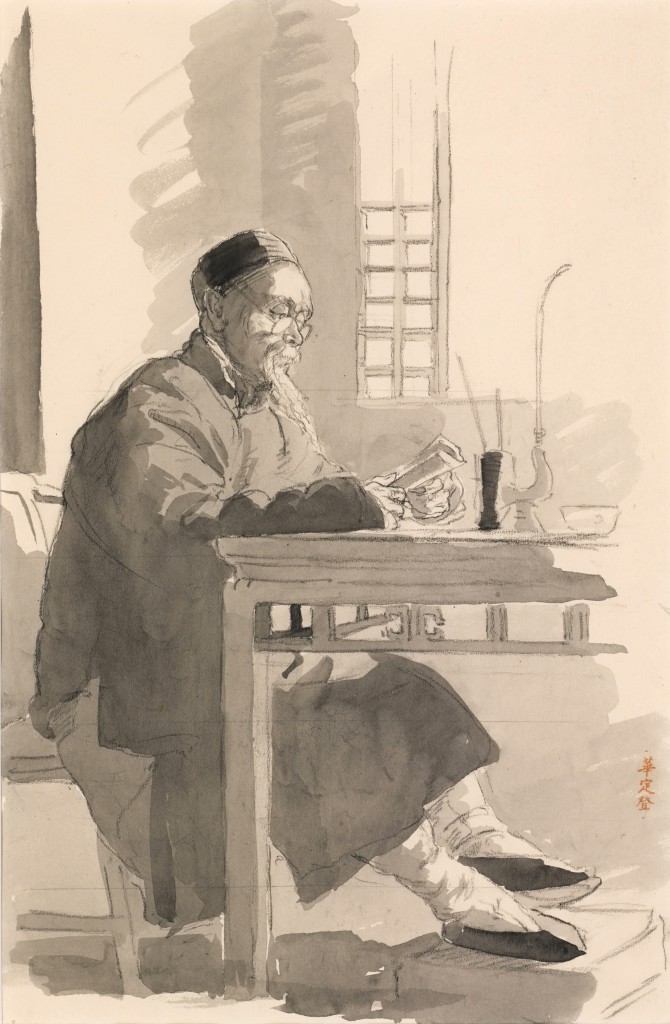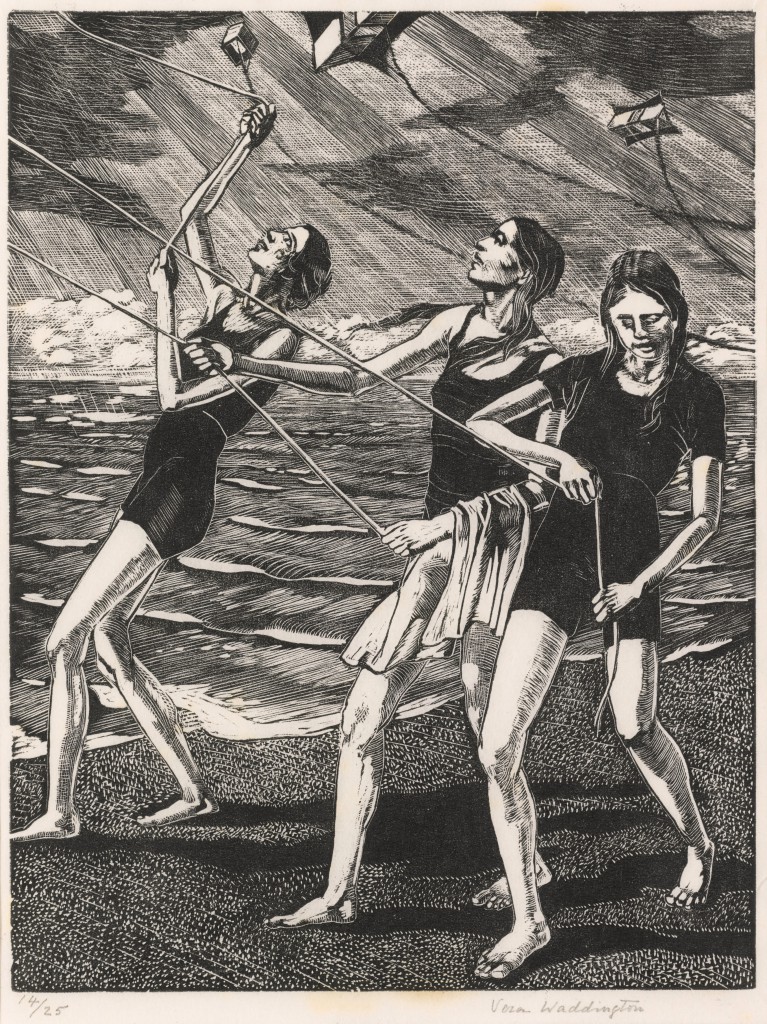Biography
Vera Waddington was born in Wiltshire on 16 January 1876, youngest child of Major General Thomas Waddington of the Indian Army and Emilie Helena Willoughby. Vera’s early years were spent in India. After her father’s retirement the family returned to Europe, settling, like many other army families, in Freiburg, Germany where Vera attended High School. Her illustrated notebooks show, from an early age, her passion and talent for drawing and painting. In July 1892 the family returned to England and settled in Pangbourne, Berkshire. Vera was determined to be an independent, professional artist attending classes at the Reading School of Art and travelling extensively in Europe to visit the major galleries.
In 1903 Vera, who was already technically accomplished, persuaded her parents to allow her to attend the Slade, living during the week with her married sister Ethel Moon in London. This was the era at the Slade of the “crisis of brilliance” that included many of the best-known and distinctive British artists of the early twentieth century. Vera’s attendance at the Slade was irregular constrained by family demands. However she completed her course with considerable distinction and prizes in 1908. Her work was particularly commended by her teacher the formidable Henry Tonks, who remained a life-long friend and supporter, even when Vera’s visual expression differed from his own.
Vera made occasional visits to the Slade for some years and became a friend of Duncan Grant. She became acquainted with Virginia and Vanessa Stephen (later Virginia Woolf and Vanessa Bell), and other members of the Bloomsbury Group when she painted a mural in Grant’s studio at 38 Brunswick Square.
Her first solo show, held at the Carfax Gallery, London in December 1910 was the result of a remarkable journey to China, undertaken in 1909-10 with her eighty-two year old father and sister Mabel. They travelled on the Trans Siberian Railway staying in Peking and Shanghai, and returning via Japan and Korea. Some of her drawings and watercolours of Chinese life were used to illustrate Home Life in China by Isaac Taylor Headland recently reissued by Routledge.
During the next few years she continued her travels with her father and sister, spending the winter of 1911 in Tangiers and in India the following year. She experimented with her technique, painting decorative panels from her observations in Tangiers, which were first exhibited at the New English Art Club in 1911. Vera was attuned to the significant aesthetic and technical changes in painting produced both by her contemporaries and in continental Europe. She admired the post-impressionists and especially the work of Cezanne. However instead of producing pastiches of their work she maintained an independent line choosing to develop her style in a variety of media including oil, watercolour, wood engravings, linocuts and calligraphy and illumination.
Vera had a strong urge for personal independence so that she could paint whilst remaining anchored to traditional family security. She turned down several suitors who might have restricted this independence. In 1913 she finally married Mervyn Drake, an electrical engineer, whilst retaining strong ties to her father and sisters.
During the First World War she undertook few commissions, focusing on the war effort. She joined the Red Cross and then trained and qualified in massage (physiotherapy), working in various hospitals in London and the South. Her illustrated book on massage, published in 1917, became a standard manual for many decades.
Her first daughter Christina was born in 1917, when Vera was already 41 years old, and her second, Veronica, in 1919. Having children did not inhibit her artistic work. After the war she designed the Pangbourne war memorial and was commissioned to produce an exquisitely executed and distinctive Role of Honour for the church of St Margaret’s, Mapledurham. To undertake this she studied illuminated manuscripts at the South Kensington Museum and did a course in calligraphy.
The death of her father and sister in 1921 was a devastating blow emotionally. However the 1920’s proved a highly creative period for Vera. Accompanied by her young daughters she spent many months of the year abroad mainly in Italy painting in oils and watercolour. She exhibited regularly at the New English Art Club and the Women’s International Art Club, also at the Friday Club, Royal Academy, the Goupil Gallery, the Paris Salon and in various provincial galleries, contributing to over 120 exhibitions in the course of her professional life.
In the late 1920’s Vera learnt the art of wood engraving from the renowned Eric Fitch Daglish, presenting a solo show of wood engravings and water colours at the Claridge Gallery in 1929 as well as exhibiting at the Art Institute of Chicago.
She held a further solo show at the Goupil Gallery in 1939 and continued to produce wood engravings and lino cuts, as well as painting in oils until her death following a road accident in 1954.
.


